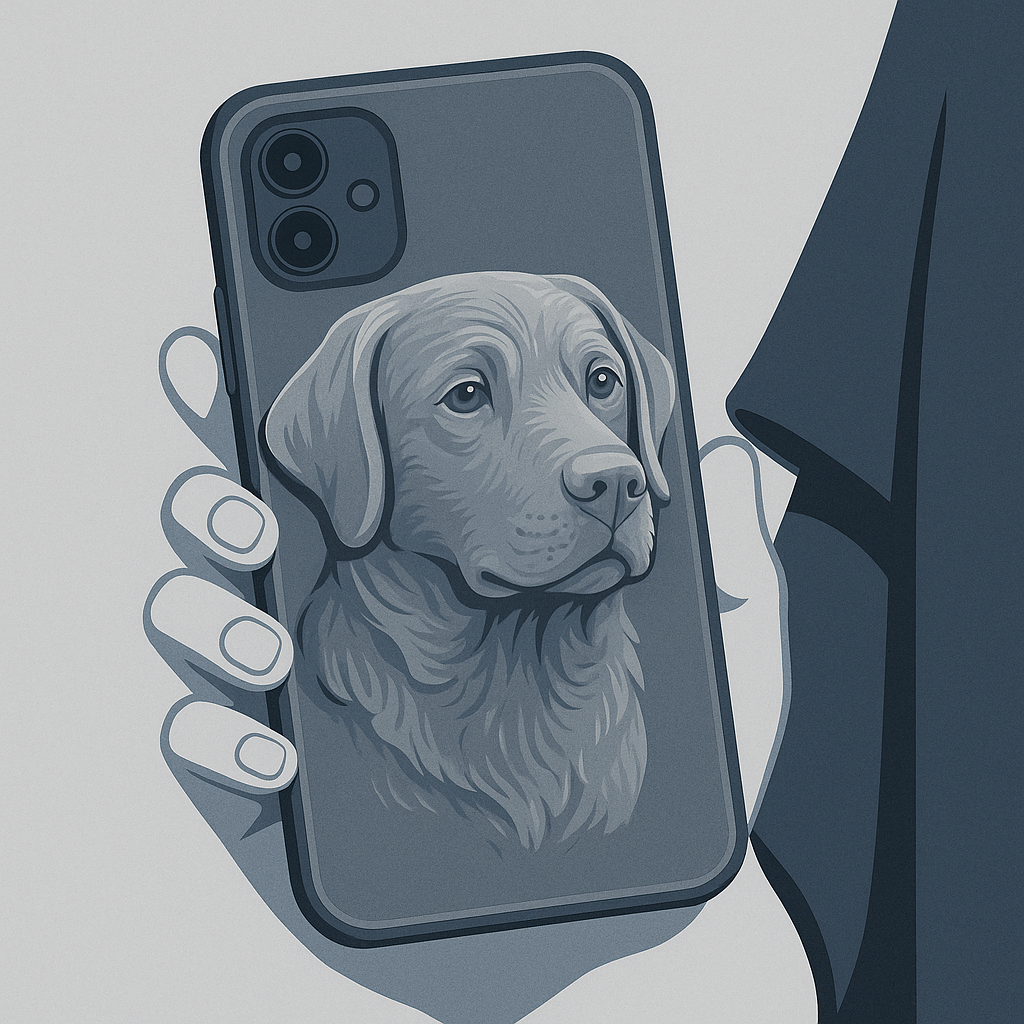A dog’s goofy smile. A cat’s judging stare. A rabbit’s twitching nose. What if these little snapshots of personality could live not just in your camera roll—but right on your phone, sculpted in tactile, textured detail?
Welcome to the next wave of personalization: 3D embossed pet phone cases. It’s not a sticker, not a photo—it’s a fusion of material science, digital art, and manufacturing magic that turns your beloved pet into a palm-sized relief sculpture.
Let’s unpack the tech and techniques behind this tiny masterpiece.

Step 1: It Starts With the Perfect Portrait
Not all photos are created equal. For a high-quality 3D embossing, the system needs:
- A high-resolution front-facing image
- Clear contrast between pet and background
- Strong side lighting to define features like fur flow, ears, and snout shape
Some services use AI-based depth mapping to translate a flat photo into a 3D model. Others allow you to manually adjust contours in an app—like sculpting with digital clay.
Step 2: Turning a Photo Into 3D Relief
This is where computational geometry takes over. Specialized software converts image data into a height map—a grayscale representation where brightness corresponds to elevation. Think of it like a digital topographic map of your pet’s face.
That map is then used to generate a 3D mesh. Each point on this mesh represents a tiny surface area that will be physically embossed. Algorithms smooth out transitions to ensure natural fur textures, nose curves, and expressive eyes remain realistic but printable.
Step 3: Material Alchemy
Not all phone cases can hold an embossed design. The ideal material must be:
- Flexible enough to protect your phone
- Durable enough to hold the sculpted shape
- Textured enough to highlight depth and shading
Most custom 3D cases are made from TPU (thermoplastic polyurethane) or silicone-blended polycarbonate, which balance toughness with tactile feedback. The printing itself is often done using UV-curable resin layering, where each layer is hardened under UV light for sharp, raised details.
Step 4: Color, Touch, and Feel
After embossing, your case goes through multilayer finishing. High-precision printers add color directly onto the sculpted surface—think pet-specific fur patterns, eye sparkle, or even custom name tags. Some makers offer:
- Matte finishes for a soft-touch feel
- Gloss coats for durability
- Heat-sensitive layers that subtly change shade with your hand temperature
Step 5: Adding Interactive Features
The most innovative 3D pet phone cases now integrate:
- NFC tags embedded in the case, leading to your pet’s digital profile or adoption story
- QR codes with emergency contact details
- Holographic effects using micro-prism layers for added sparkle in sunlight
More Than a Case: It’s a Daily Connection
This isn’t just cute. It’s brain science. Studies show that tactile memory triggers—like the feel of a sculpted ear or paw—can strengthen emotional connections and lower anxiety. That little embossed nose? It’s a sensory comfort zone in your pocket.
The Future: Moving Pets, Smart Cases
Looking ahead, 3D pet cases may evolve to:
- Include micro-actuators that create subtle movement
- Use AR filters to animate your embossed pet when scanned
- Feature scented layers that mimic your pet’s calming presence
In a world where screens dominate, a 3D-embossed case gives your hands something to feel and your heart something to hold.
So next time someone asks, “Is that your dog on your phone?”—you can smile and say, “Not just on it. In it.”
